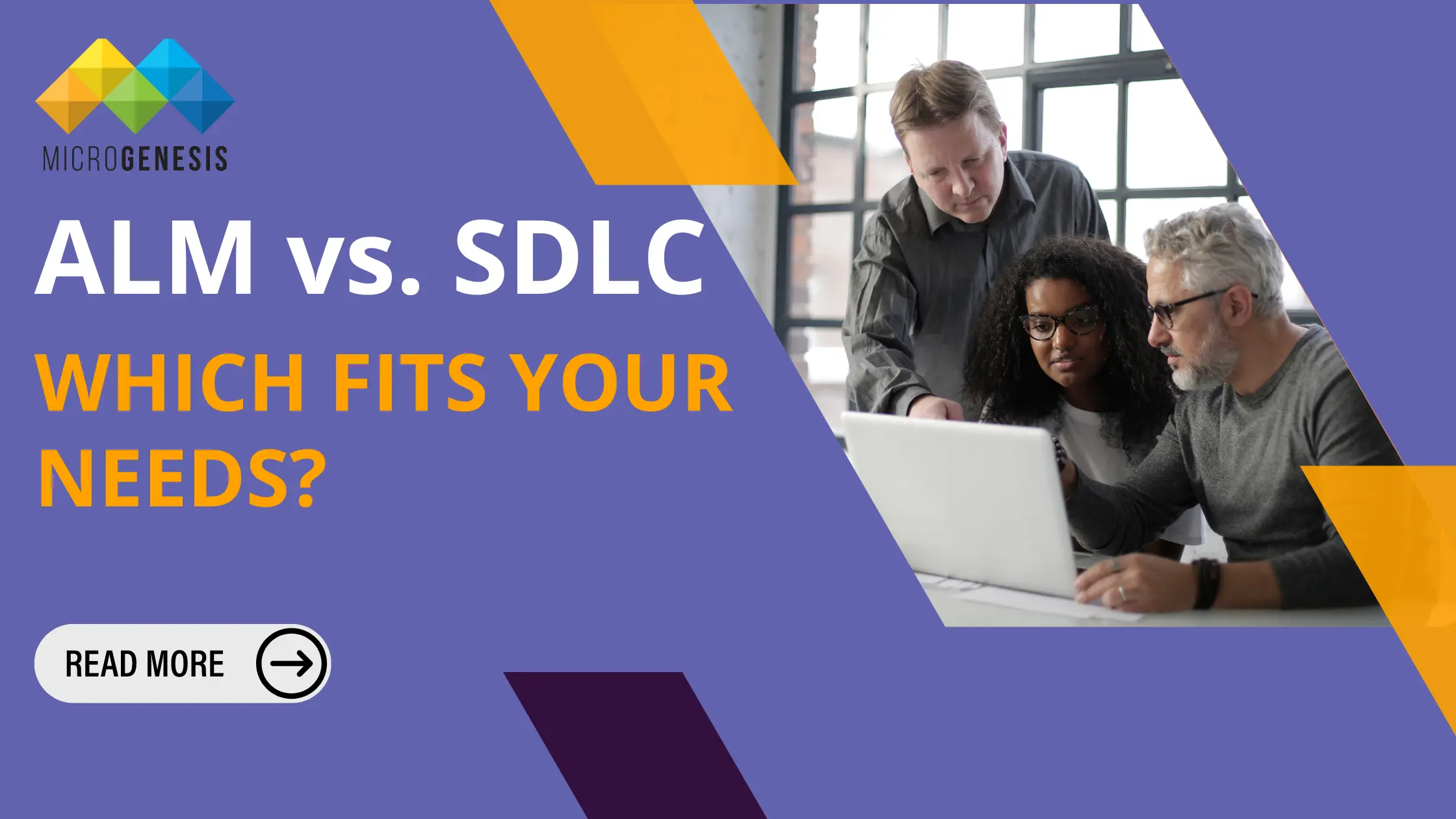Creating groundbreaking software is akin to crafting a piece of intricate jewelry. Both processes start with a vision and an idea—just as a jeweler begins with sketches and rough designs, software developers initiate their projects with conceptual plans and objectives. This comparison extends to the tools and materials used; for a jeweler, it’s metals and precious stones, while for a software developer, it’s programming languages, frameworks, and libraries.
Understanding the Software Development Lifecycle (SDLC) and Application Lifecycle Management (ALM) is crucial for anyone involved in software creation. These frameworks ensure that software is developed efficiently, meets quality standards, and aligns with customer expectations.
What is the Software Development Lifecycle (SDLC)?
The Software Development Lifecycle (SDLC) is a structured approach to software development. It encompasses the phases necessary to create and maintain software, including planning, designing, coding, testing, deploying, and maintaining. Each phase has specific tasks and objectives that contribute to the overall success of the project.
Key SDLC Models
- Waterfall Model
- Description: The Waterfall model is a traditional, linear approach to software development. It progresses through clearly defined stages: planning, requirements gathering, design, development, testing, deployment, and maintenance.
- Advantages: Simple to understand and implement; each phase is completed before the next begins.
- Disadvantages: Limited flexibility; changes are difficult to accommodate once a phase is completed.
- Agile Model
- Description: The Agile model divides the project into smaller parts, called iterations or sprints, which are developed and delivered incrementally. This approach allows for more flexibility and adaptability to change.
- Advantages: Greater flexibility; frequent reassessment and adjustments based on feedback.
- Disadvantages: Requires continuous collaboration and may lead to scope creep if not managed properly.
ALM vs. SDLC
While SDLC focuses on the specific process of software development, Application Lifecycle Management (ALM) encompasses the entire lifecycle of an application, from inception to decommissioning. ALM solutions provide the tools and processes needed to manage this broader lifecycle effectively, ensuring that all aspects of an application’s journey are well-coordinated and aligned with business goals. Here’s how they differ:
- SDLC: Refers to the structured process of developing software. It involves stages such as requirement analysis, design, coding, testing, deployment, and maintenance. SDLC is a subset of ALM, focusing primarily on development.
- ALM: Encompasses the broader management of an application throughout its entire lifecycle. It includes not just development but also governance, maintenance, and eventual decommissioning. ALM integrates people, processes, and tools to ensure that the software remains relevant and effective throughout its life.
ALM Components
- Requirement Management: Efficient management of requirements, including use cases and scenarios, ensuring that all stakeholder needs are addressed.
- Application Development: Involves source code management and version control to facilitate collaboration among development teams.
- Quality Assurance: Includes creating and managing test cases to ensure the software meets quality standards.
- Deployment: Involves integrating with continuous integration (CI) servers and tracking changes across builds.
- Maintenance and Support: Ongoing support and updates to address bugs and improve functionality.
The Importance of SDLC
1. Quality
The SDLC’s systematic approach ensures high-quality software. By thoroughly planning and anticipating potential issues, you can minimize errors and improve the final product. Continuous testing throughout each phase helps in identifying and fixing bugs early, saving time and resources.
2. Implementation Control
SDLC provides a clear roadmap for managing the timeline, budget, and resources. It breaks down tasks into manageable chunks, allowing for better tracking and control of the development process.
3. Security
A structured SDLC process aids in maintaining software security. By keeping track of access to different parts of the code and monitoring changes, you can protect the software from unauthorized access and potential threats.
4. Best Practices
- Keep Data Clean: Ensure data accuracy and up-to-date information to support effective decision-making.
- Stay Agile: Adopt Agile methodologies to respond rapidly to changes and feedback.
- Quality Assurance Testing: Regular testing helps catch issues early, reducing long-term costs and enhancing software reliability.
Read more: ALM Tool Customisation and Configuration
Stages of the SDLC
1. Requirement Analysis
Document and analyze the requirements to understand what users need and identify any technical constraints. This stage sets the foundation for the entire project.
2. Project Planning
Determine the methods, tools, timeline, and budget for the project. Collaboration tools like Stormboard can facilitate planning and keep everyone on the same page.
3. Coding and Testing
Develop the software by writing code and ensuring it meets the required specifications. Testing during this phase helps identify and fix any issues before deployment.
4. Deployment and Maintenance
Deploy the software to the intended environment and address any post-deployment issues. Continuous maintenance ensures the software remains functional and up-to-date.
Conclusion
Creating software is a meticulous process, much like crafting a fine piece of jewelry. Understanding and applying the SDLC ensures that each phase of development is carefully executed, leading to high-quality, secure, and effective software. Meanwhile, ALM provides a broader framework that encompasses the entire lifecycle of an application, from its creation to its eventual decommissioning.
At MicroGenesis, as a leading digital transformation consultant, we specialize in leveraging ALM Consulting services to help teams integrate SDLC within a comprehensive ALM framework. This approach ensures that software projects are managed efficiently, adapting to changes and delivering exceptional results. In the fast-paced world of software development, mastering these processes with the right tools and expertise is essential for achieving productivity and success.




